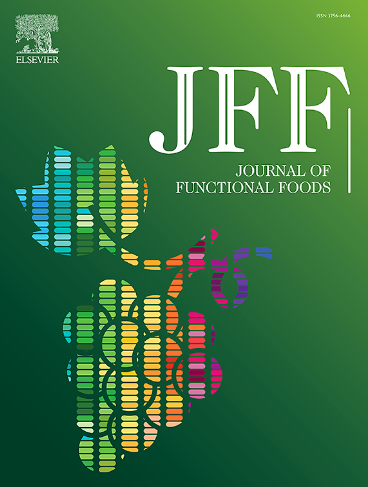Comprehensive study of Tilapia skin collagen peptide on ileal injury and intestinal flora in rats induced by high altitude hypoxia
IF 3.8
2区 农林科学
Q2 FOOD SCIENCE & TECHNOLOGY
引用次数: 0
Abstract
Acute high-altitude hypoxia is typically linked to intestinal injury and dysbiosis of the gut microbiota. Thus, the aims of this study were to investigate the effects of Tilapia skin collagen peptide (CP) on inflammatory response, antioxidant systems, intestinal barrier function, and intestinal flora in rats exposed to high altitude hypoxia condition. Additionally, a Nano liquid chromatography-tandem mass spectrometry (nano LC-MS/MS) and virtual screening were employed to identify specific peptides that could be functionally significant. The results showed that CP could reduce the Disease active index (DAI), increase the mRNA expression level of tight junction protein, and reduce the content of D-lactic acid (D-LA) and Diamine oxidase (DAO) in the serum of rats, and thus alleviate the mechanical injury of intestinal mucosa induced by hypoxia. In addition, CP improved hypoxia-induced intestinal inflammation by significantly down-regulating pro-inflammatory cytokines (IL-6, IL-12, TNF-α and CRP). Furthermore, CP significantly up-regulated the an tioxidant enzymes SOD and GSH-Px and down-regulated MDA in the serum of rats, and improved hypoxia-induced oxidative stress. 16S rDNA sequencing of the intestinal flora revealed that CP significantly reduced the abundance of the pathogenic bacterium Escherichia, increased the abundance of the beneficial bacterium Limosilactobacillu, and significantly increased the levels of acetic acid, isobutyric acid, and isovaleric acid in feces. Five potential anti-inflammatory peptides were identified including AGFF, FGLGFF, LGLF, LGFL and LFGF by nano LC-MS/MS technology and virtual screening. Molecular docking analysis revealed that these screened peptides can competitively interrupt the formation of TNF-α. Consequently, CP effectively alleviates hypoxia-induced intestinal barrier injury in rats by reducing inflammation, oxidative stress, and modifying intestinal flora and its metabolites.

求助全文
约1分钟内获得全文
求助全文
来源期刊

Journal of Functional Foods
FOOD SCIENCE & TECHNOLOGY-
CiteScore
9.60
自引率
1.80%
发文量
428
审稿时长
76 days
期刊介绍:
Journal of Functional Foods continues with the same aims and scope, editorial team, submission system and rigorous peer review. We give authors the possibility to publish their top-quality papers in a well-established leading journal in the food and nutrition fields. The Journal will keep its rigorous criteria to screen high impact research addressing relevant scientific topics and performed by sound methodologies.
The Journal of Functional Foods aims to bring together the results of fundamental and applied research into healthy foods and biologically active food ingredients.
The Journal is centered in the specific area at the boundaries among food technology, nutrition and health welcoming papers having a good interdisciplinary approach. The Journal will cover the fields of plant bioactives; dietary fibre, probiotics; functional lipids; bioactive peptides; vitamins, minerals and botanicals and other dietary supplements. Nutritional and technological aspects related to the development of functional foods and beverages are of core interest to the journal. Experimental works dealing with food digestion, bioavailability of food bioactives and on the mechanisms by which foods and their components are able to modulate physiological parameters connected with disease prevention are of particular interest as well as those dealing with personalized nutrition and nutritional needs in pathological subjects.
 求助内容:
求助内容: 应助结果提醒方式:
应助结果提醒方式:


